Paris, the prestigious capital of France is a dream destination for many of us. There’s so much to see and learn: grand monuments, tumultuous history, an immense cultural influence and economic power. To get off the beaten track, we compiled 10 funny facts about Paris which we hope will entertain you!
[lwptoc]
My Top 10 Funny facts about Paris
There’s so many funny things to say about Paris. It often comes down to our personal experience.
These incongruous moments that get to us while exploring the streets of Paris.
It could sometimes lead to moments of great confusion, embarrassment or hilarious misunderstanding.
There would be so many funny stories to write.
But for this post, I’m leading you to more ‘collective’ experiences while unveiling a few funny facts about Paris.
It’s only a short list of 10 points – if you have any other ideas, please let me know in the comments below!
1. The Eiffel Tower, a useless monstrosity

Many outraged French intellectuals, including Charles Gounod, Charles Garnier and Alexandre Dumas vigorously protested against the project and tried, through the media, to oppose the Eiffel Tower‘s construction.
Guy de Maupassant chose to eat at the restaurant up the tower declaring that this was the only place in Paris he could not see the structure! The press published outraged critics describing the Eiffel Tower as a “useless monstrosity”.

Today, the Eiffel Tower is a national icon and the title of ‘monstrosity’ now belongs to the Montparnasse Tower which summit offers a spectacular view over Paris… without the skyscraper itself!
2. Zidane’s headbutt statue outside the Pompidou Centre
On the 26th September 2012, an oversized bronze statue of Zidane headbutting Materazzi was unveiled in Paris. The five-metre (16ft) statue by Algerian-bord artist Adel Abdessemed portrayed Zidane headbutting Italy’s Marco Materazzi, an event that occurred at the finals of the 2006 World Cup.
Having faced opposition by the French directors of football associations, the statue was bought by the Qatari Museum Authority who placed it in October 2013 on the Doha Corniche, Qatar.
Causing again much criticism, it was taken down soon after and moved into the Arab Museum of Modern Art in Doha.
3. There are more dogs in Paris than Parisians
Another wrong preconceived idea about dogs in Paris!
However, one fact remains: dogs’ poops are still found all over Paris. On the pavements of the cobbled and chic streets of Le Marais, in the beautiful parks and gardens and, most regrettably, on the sole of our shoes.
The ‘crottes de chien’ account for more than 20 tonnes of poops each day, left there by some 300,000 dogs … representing 1 kilo of poops every 5 seconds. This would easily fill three olympic swimming pools…
Oh mon Dieu!
4. Stay away from the Paris syndrome and keep calm
(la Tour Eiffel ? C’est par là ! – Le Parisien, il vaut mieux l’avoir en journal !)
(the Eiffel tower? It’s over there! – Le Parisien, it’s better as a newspaper!)
Paris is more than the Eiffel Tower, l’amour, le Moulin Rouge, and the charming Belle Époque metro signs.
A few tourists may come with an idealised image of the French capital which is far from the reality.
For example, Japanese visitors are particularly susceptible to suffer from the Paris syndrome.
It is a psychological disorder manifested by acute delusional states, hallucinations, feelings of persecution, derealisation, depersonalisation, anxiety, dizziness, tachycardia, sweating and other difficult-to-understand psychiatric symptoms!
It is estimated that 20 cases of mental breakdowns are diagnosed each year, most of them from visiting Japanese tourists.
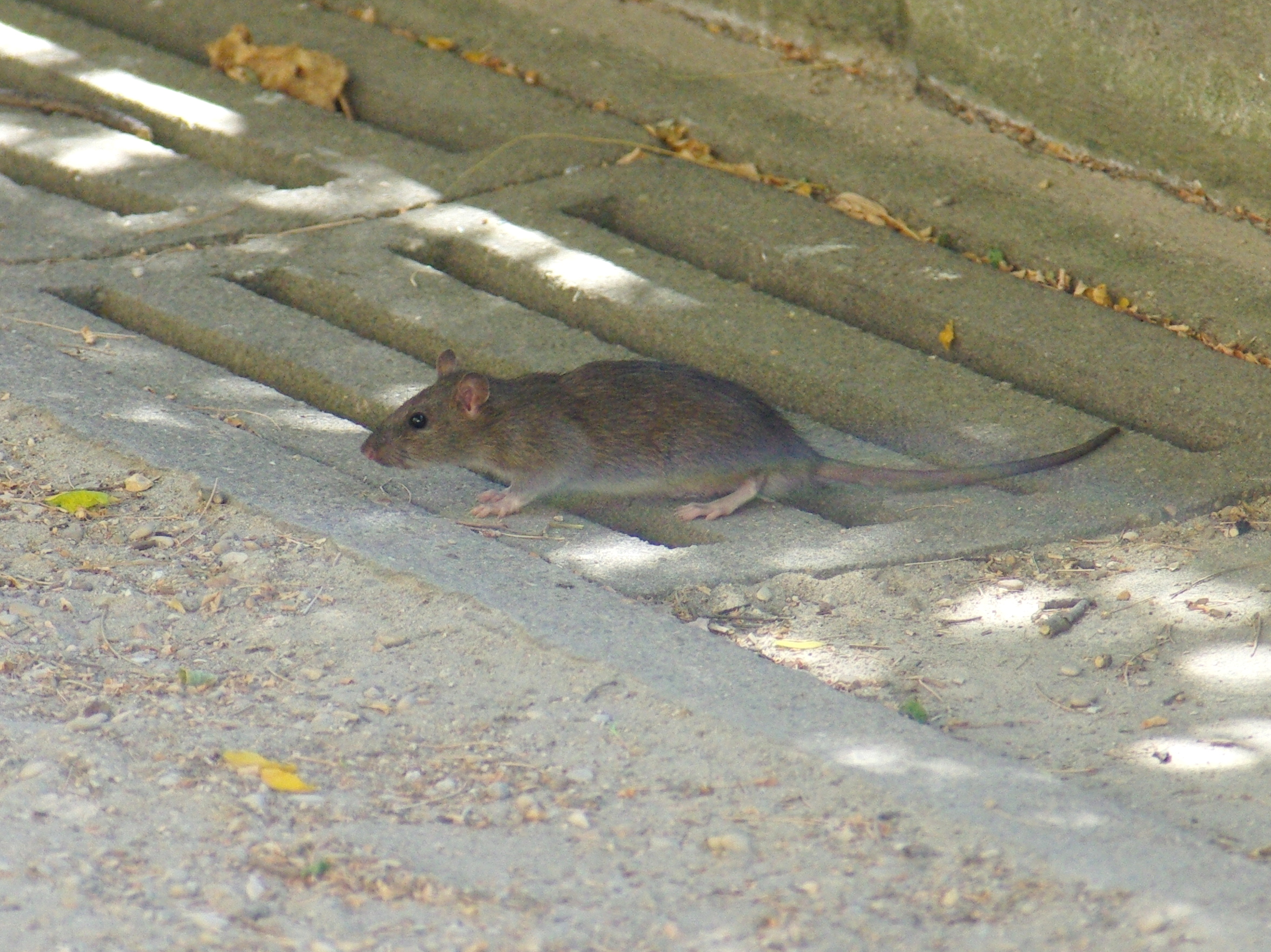
However no cases of Paris syndrome have been reported in 2020… and I’m still wondering why! 😜
5. An icing strawberry cake castle at Disneyland Paris
![Disneyland Paris © Saturne - licence [CC BY-SA 2.0] from Wikimedia Commons](https://frenchmoments.eu/wp-content/uploads/2017/11/Disneyland-Paris-©-Saturne-licence-CC-BY-SA-2.0-from-Wikimedia-Commons.jpg)
The kitsch replica of the fairy tale castle of Sleeping Beauty serves as the main landmark of Disneyland Paris, Europe’s most visited theme park.
The original concept of the château de la Belle au Bois dormant could have posed a problem to the architects. For the first time, Disney was building a Magic Kingdom in Europe, the continent from where originated medieval castles.
“Sleeping Beauty Castle at Disneyland was inspired by the Neuschwanstein Castle in Southern Germany. This European influence was fine for building a castle in Anaheim, but the fact that castles exist just down the road from Disneyland Paris challenged us to think twice about our design.” —Tony Baxter, executive designer Walt Disney Imagineering.
The 50 meter tall château, resembling an icing strawberry cake, was then designed with greatly exaggerated and quirky forms to produce something in Europe truly out of the ordinary with a sense of childhood whimsy.

6. The famous Mr Rubbish Bin of Paris
This name should have been soft on the ear: ‘Poubelle’. And yet, Monsieur Eugène Poubelle (1831-1907), a diplomat and Préfet of Paris gained his fame by introducing the rubbish bin to the people of Paris.
In the 1880s the population of Paris was close to two million and Poubelle introduced a few revolutionary hygiene measures.
On the 7th March 1884, the Préfet decreed that owners of buildings had to provide those who lived there with three covered containers of 40 to 120 litres to hold household refuse.
Encouraged by newspaper Le Figaro, which called them ‘Boîtes Poubelle’, Parisians began to name their boxes after the smart Préfet.

Needless to say that his name actually derives from ‘pau-belle’ meaning ‘poorly beautiful’!
7. Why do the French call their policemen ‘chicken’?
![Police in Paris © SK Sturm Fan - licence [CC BY-SA 3.0] from Wikimedia Commons](https://frenchmoments.eu/wp-content/uploads/2014/06/Police-in-Paris-©-SK-Sturm-Fan-licence-CC-BY-SA-3.0-from-Wikimedia-Commons.jpg)
The French have several slang words for their police force: Schmidts, flics, keufs, kisdés, condés…
One of them stands out: ‘poulet’, which means chicken.
This term originates from the tragic events of the Commune of Paris in 1871. When the buildings of the Parisian police burnt down, Jules Ferry made the new barracks on the Île de la Cité available to the security forces.
For the history books, the new Préfecture de Police stands on the former site of Paris’ poultry market. It did not take long for the catchy moniker to be associated to the French police.
8. The sources of River Seine are in Paris, bien sûr!
Well, this statement is proven correct since 1864 when the French capital has acquired the grounds in the Plateau of Langres (Burgundy) where the river rises.
![The grotto at the Source of the Seine © Thesupermat - licence [CC BY-SA 3.0] from Wikimedia Commons](https://frenchmoments.eu/wp-content/uploads/2020/05/Saint-Germain-Source-Seine-LR-©-Thesupermat-licence-CC-BY-SA-3.0-from-Wikimedia-Commons.jpg)
The commune of Source-Seine in the département of Côte d’Or is located 231 km away from Paris. There lies the remains of a Gallo-Roman temple dedicated to the goddess Sequana who gave its name to the Seine.
9. Let’s stroll to the morgue!
Jean XXII Square offers a spectacular vista on the flying buttresses of Notre-Dame (although the park is closed at the moment following the great fire of Notre-Dame on the 15th April 2019)
Next to it, another green area forms the eastern tip of Île de la Cité: Square de l’Île de France. Only a few people know that was the site of the former Paris morgue.
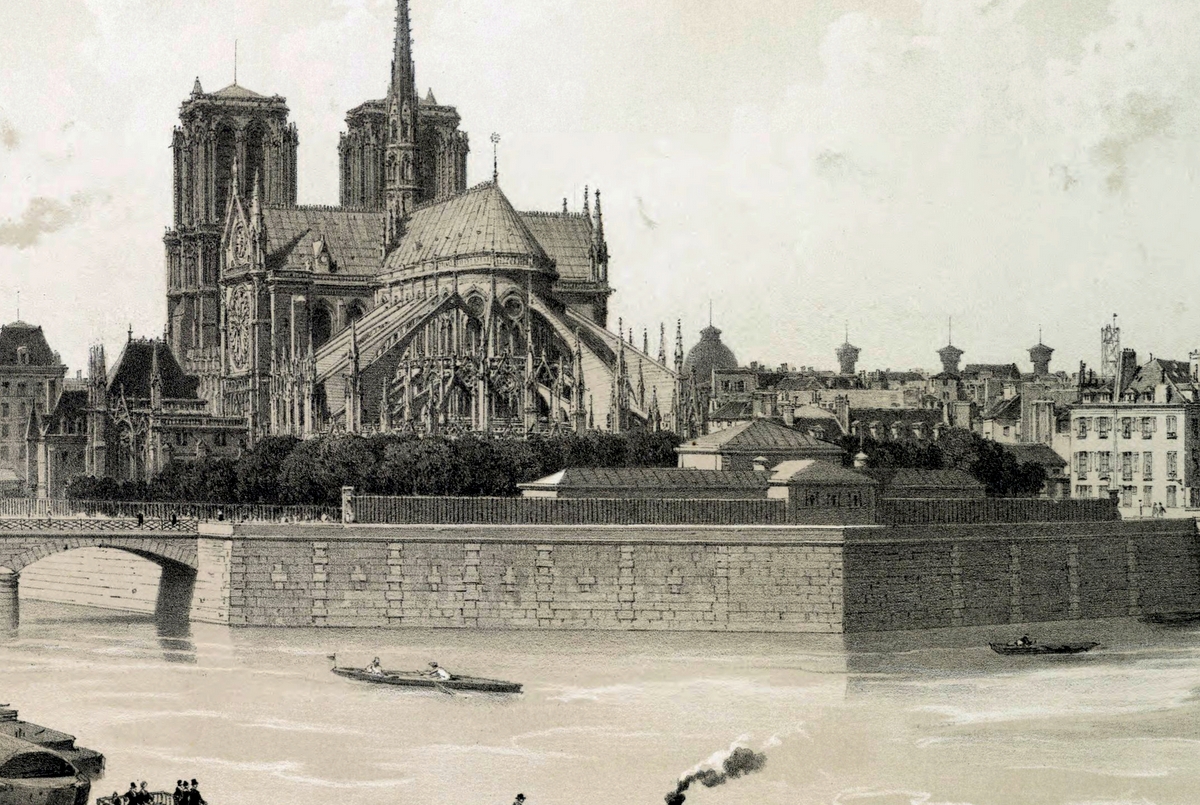
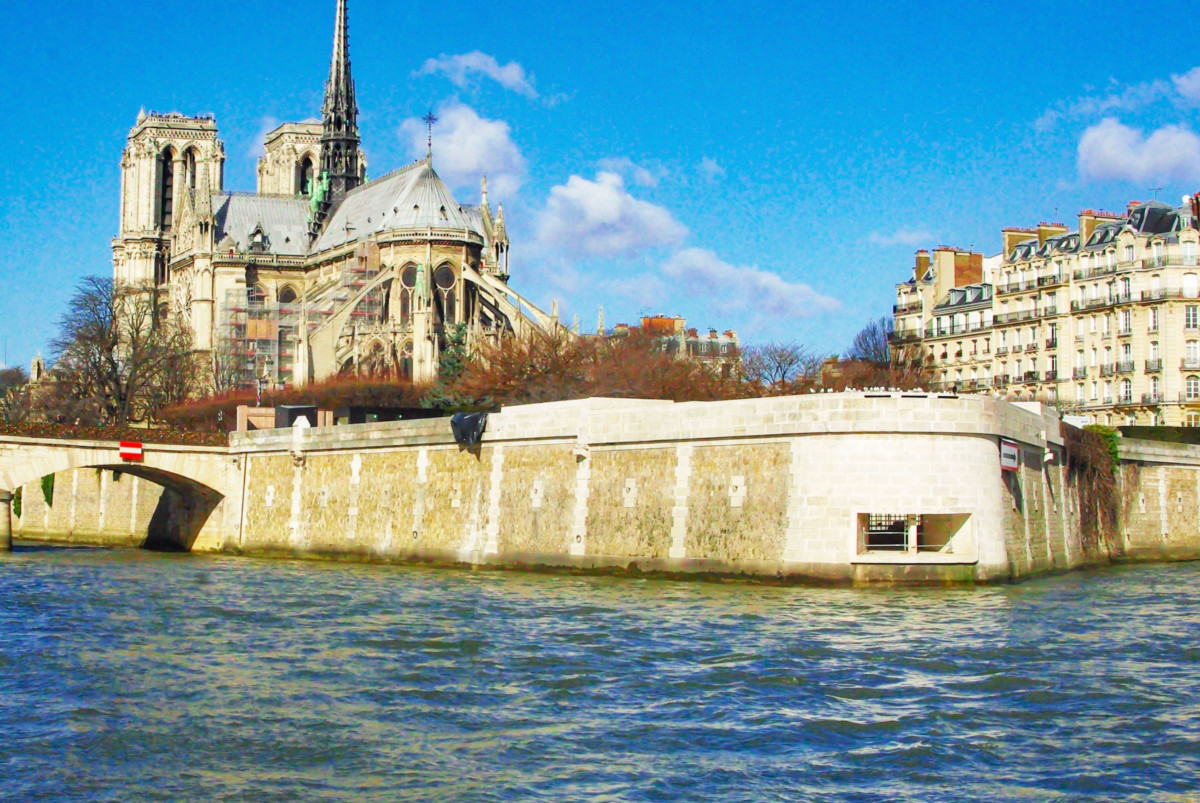
From the Napoleonic era until 1910, up to 40,000 visitors would come there in a single day. This place of entertainment provided its lots of gossip on the possible identities of the corpses and causes of death.
Today the Mémorial des Martyrs de la Déportation occupies part of the square. It is a memorial to the 200,000 people who were deported from Vichy France to the Nazi concentration camps during World War II. Charles de Gaulle inaugurated the site in 1962.
10. The Eiffel Tower can shift away!

If the iron structure is strong enough to face strong winds, it swayed 13 cm during a storm in 1999, which blew at 240 kph.
As for the variation of ambient temperature, the top of the tower may shift away from the sun by as much as 18 cm which was recorded during the 1976 heatwave.
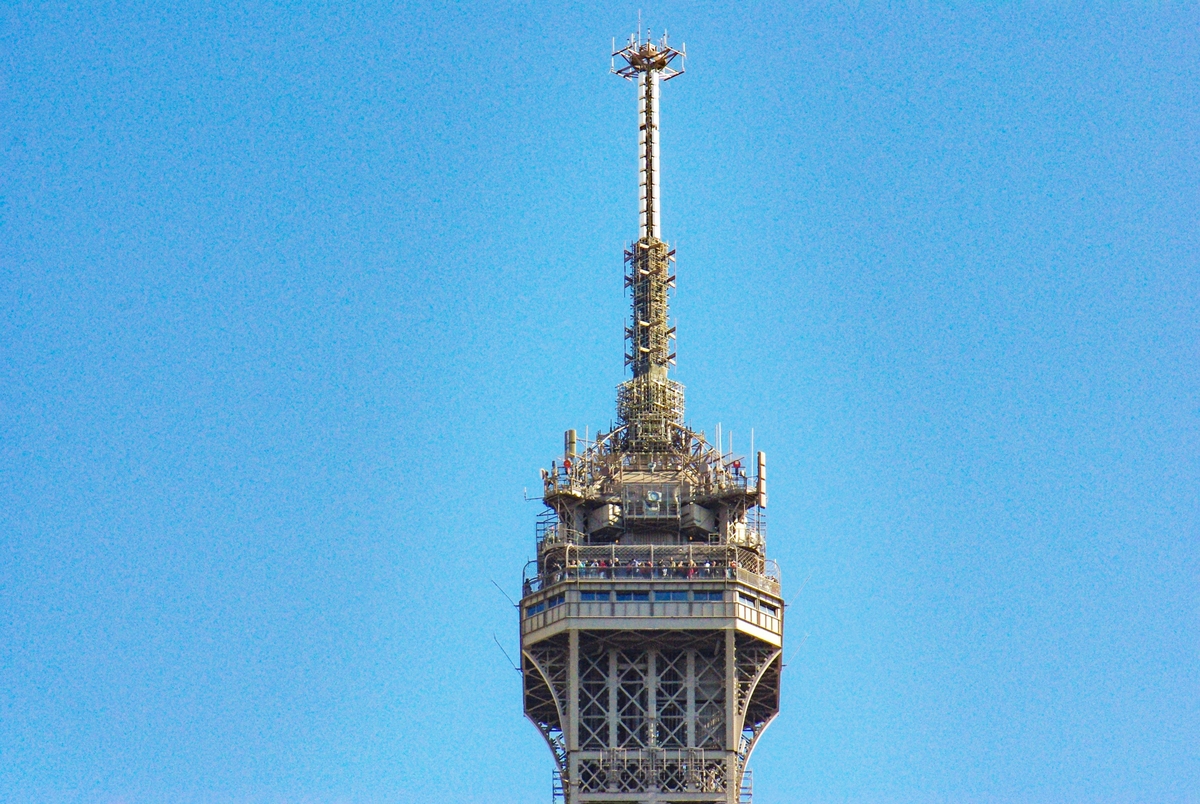
In fact, Gustave Eiffel had allowed for a variation as much as 70 cm.
No doubt, Gustave Eiffel was a genius: the Eiffel Tower will stay strong and tall for a long time!
More funny facts about Paris
Want to read more funny facts about Paris and France in general?
Although I am a French national, I LOVE Stephen Clarke’s book “Talk to the Snail”.
For me, his observation of the Parisians and the French is just hilarious… and yes there is a little bit of truth in what he wrote.
- Have you ever walked into a half-empty Parisian restaurant, only to be told that it’s “complet”?
- Attempted to say “merci beaucoup” and accidentally complimented someone’s physique?
- Been overlooked at the boulangerie due to your adherence to the bizarre foreign custom of waiting in line?
Well, you’re not alone. The British author has been there too, and he is here to help.
In this book of advice, find out how:
- to get good service from the grumpiest waiter;
- be exquisitely polite and brutally rude at the same time;
- and employ the language of l’amour.
Everything you need is here in this funny, informative, and seriously useful guide to getting what you really want from the French.
I’m putting the affiliate link to his book here below:
The British journalist is a prolific international bestselling author. He’s written two other books with the same ‘style’: A Year in the Merde and In the Merde for Love. Oh là là !


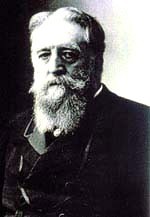


I recommend this book: Sixty Million Frenchmen Can’t be Wrong (Why We Love France but not the French) by Jean-Benoit Nadeau & Julia Barlow.
Thank you Carol! Yes, that’s another great one! 🙂